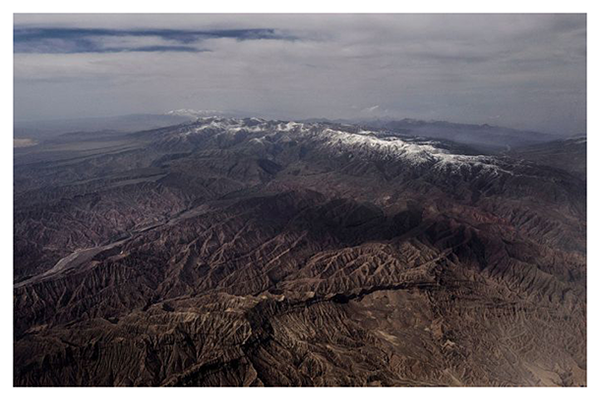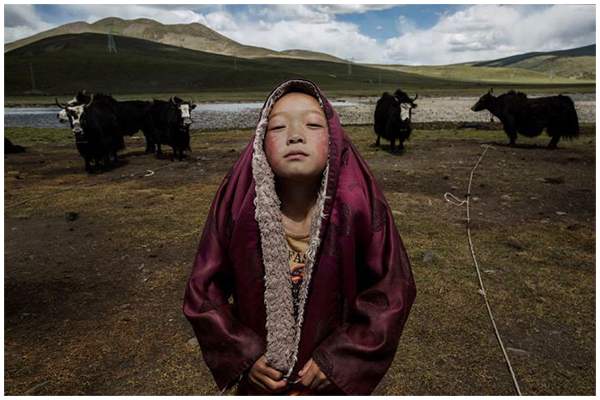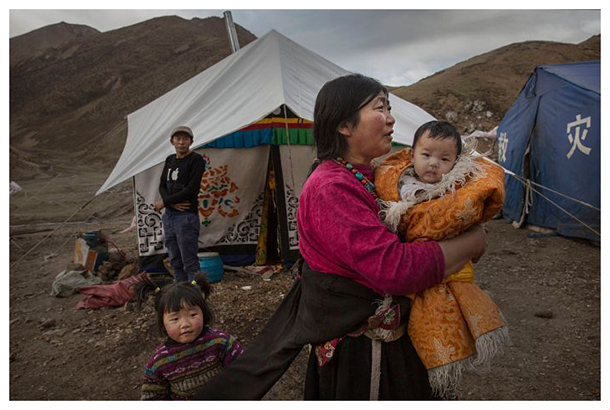Climate change, battery boom threatens life on the ‘roof of the world’ — the Tibetan Plateau
 Climate change is sometimes discussed as a problem of the future, but on the “roof of the world”, it has already arrived. The remote, icy plains of the Tibetan Plateau — the highest and largest plateau on the planet — cover a massive 25 per cent of China’s landmass.It plays an important role — it contains the largest supply of fresh water outside the polar regions, and gives birth to some of Asia’s most legendary rivers.
Climate change is sometimes discussed as a problem of the future, but on the “roof of the world”, it has already arrived. The remote, icy plains of the Tibetan Plateau — the highest and largest plateau on the planet — cover a massive 25 per cent of China’s landmass.It plays an important role — it contains the largest supply of fresh water outside the polar regions, and gives birth to some of Asia’s most legendary rivers.
From the Mekong and the Ganges to the Yangtze and the Yellow River, it has nourished civilisations, sustained ecosystems, and inspired religions.
Today it is a lifeline to the estimated 1 billion people who rely on it.
But that lifeline is under threat.
A way of life in danger
Climate change has caused temperatures to rise on the plateau faster than anywhere else in Asia.
As a result, the region’s glaciers and grassland are thawing at an alarming rate.
If melting continues, an estimated two-thirds of the plateau’s glaciers will be gone by 2050, one scientist told the Asia Society conference in 2009.
That would have a huge impact, says Tsechu Dolma, a Tibetan refugee and founder of the Mountain Resiliency Project, which aims to empower local women with agribusinesses.
“[Around] 1.4 billion people out of the 7 billion human population actually depend on the water that originates from Tibet,” she says.
“[The water] carries a lot of silt from the plateau downstream. This silt is needed for the rice paddies in South-East Asia … the food that is grown feeds the rest of the world.”
 Already thousands of lakes have dried up.
Already thousands of lakes have dried up.
Desert now covers one-sixth of the plateau and places which once bloomed have been reduced to sand dunes.
The most vulnerable people affected, Ms Dolma says, are the traditional farmers and herders whose livelihoods depend on the land.
“The majority of the Tibetans who live inside Tibet continue living as herders and farmers, and for a lot of them their livelihood has become very difficult with climate change,” she says.
“Women who gather water and firewood for cooking and eating have to travel further away from their homes, and a lot of young children and other shepherds have to travel further with their livestock to graze.
“[Farmers] are definitely realising how much more difficult it is for them to get food, how unpredictable the climate has been, how unpredictable the water sources have been.”
Increased water supply is also said to have caused increased flooding and natural disasters in the area, and locals are now turning to the gods for answers.
“A lot of people are trying to use Buddhist epistemologies to understand what is happening around us,” Ms Dolma says.
“They understand it is because of the fact that us humans, we are doing things to degrade our environment and to upset the spirits who live inside the land.
“Because of these disruptions, all these tragedies are happening in the form of floods and fires.”
‘A vicious cycle of repression and resistance’
It’s not the only challenge facing Tibet, a region with a long history of turmoil.
While climate change is slowly transforming the landscape, so too is China, which controls the semi-autonomous region.
In the late 1950s, when China sent in troops to assert its claim over Tibet, thousands of nomads were dispersed and resettled into neighbouring Chinese provinces. Others fled as refugees to Nepal and India.
Human rights organisations and advocates of Tibetan self-determination have previously denounced China’s rule over Tibet, claiming it has led to an eradication of culture, language and traditions.
“Tibet has been under the Chinese occupation for the last 70-odd years, and for all these years there has been a vicious cycle of repression and resistance,” says Kyinzom Dhongdue, a Tibetan refugee and journalist for the Times of India.
Ms Dhongdue was born to Tibetan parents in India, where she is a member of the Tibetan Parliament in Exile.
“Although I have never seen the physical Tibet, [it] is very much part of who I am,” says Ms Dhongdue, who is now based in Australia.
“It has shaped me as an individual.”

PHOTO: Development in the region is endangering traditional culture and language, Ms Dhongdue says. (Getty: Kevin Frayer)
The impact of mining
In recent years the Chinese Government has stepped up mining in the Tibetan Plateau, along with transmigration — a forced relocation project that moves Chinese citizens to the region.
Beijing says the project will improve local herders’ living standards by moving them to a less populated area.
But activists say it leaves Tibet’s natural resources of lead, zinc, asbestos and lithium vulnerable to exploitation.
“The Chinese word for Tibet is called Xizang, which literally means ‘western treasure house’,” Ms Dhongdue says.
According to the Environmental Justice Atlas, Tibet holds 90 per cent of China’s lithium reserves, and has been a big drawcard for technology companies supplying lithium-based batteries for smart phones, tablets and electric cars.
But the mines are said to have caused increased pollution and villagers say that rivers once filled with fish are now empty.
Ms Dhongdue says development and increased tourism in the region has also exacerbated the already dire effects of climate change.
“The Chinese Government likes to claim that they have brought a lot of development inside Tibet but it has come at a great cost,” she says.
“It has brought loss of a culture and the development has actually facilitated the transmigration — the influx of a huge number of Chinese migrants to the Tibetan Plateau — and further enabled the marginalisation or the disempowerment of the Tibetan people inside Tibet.
“At face value, if tourists are allowed to go to Tibet, they can see roads being built or schools being built.
“But really at the end of the day we really have to ask the question: development on whose terms and development for whom?”
souce by :http://tibet.net


comment 0